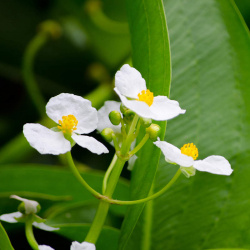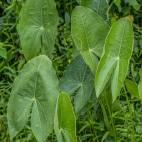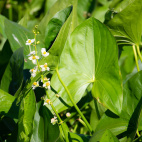Color
Availability
USDA Zone
Region
Type
Duration
Season
Germination
Soil
Sunlight
Height
Use
Narrow Your Search
Color
Availability
USDA Zone
Region
Type
Duration
Season
Germination
Soil
Sunlight
Height
Use
Wildflowers - Arrowhead Seeds
This aquatic plant loves the wet, muddy soil of swamps, ponds and streams. Forming large, tubers below the ground, the edible "duck potato" is enjoyed by birds, waterfowl, muskrats, turtles and beavers. In the past, these roots were also a food source for native Americans. The plant makes an attractive addition to wetlands with its distinictively shaped leaves, and pure white flowers. Arrowhead creates dense colonies spread by rhizomes and self-seeding.
This aquatic plant loves the wet, muddy soil of swamps, ponds and streams. Forming large, tubers below the ground, the edible "duck potato" is enjoyed by birds, waterfowl, muskrats, turtles and beavers. In the past, these roots were also a food source for native Americans. The plant makes an attractive addition to wetlands with its distinictively shaped leaves, and pure white flowers. Arrowhead creates dense colonies spread by rhizomes and self-seeding.




